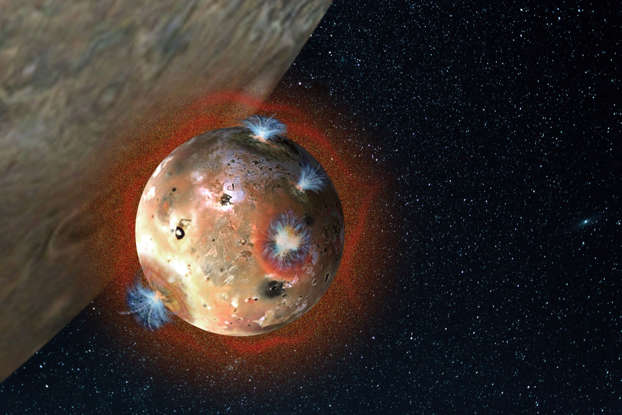
Unveiling the Fiery Wonders: 10 Incredible Volcanoes in Our Solar System
- science
- 19 May 2023
- No Comment
- 157
Volcanoes, the majestic forces of nature, have captivated humans for centuries with their raw power and awe-inspiring beauty. While Earth boasts a diverse range of volcanic landscapes, did you know that volcanoes exist beyond our planet? Join us on a cosmic journey as we explore ten incredible volcanoes scattered throughout our solar system, unveiling the fiery wonders that exist beyond our home planet.
- Olympus Mons – Mars: We begin our journey with Olympus Mons, the largest volcano in the solar system and located on Mars. Towering at a staggering height of 13.6 miles (22 kilometers), it’s nearly three times the size of Mount Everest. This massive shield volcano is a testament to the volcanic activity that once shaped the red planet.
- Maat Mons – Venus: Next, we venture to Venus, where Maat Mons, an enormous volcano, dominates the planet’s landscape. Rising approximately 5 miles (8 kilometers) high, it is known for its unusual flat top and widespread lava flows, showcasing the volcanic activity that has shaped our neighboring planet.
- Loki Patera – Io: Our journey takes us to the moon Io, one of Jupiter’s moons. Here, we encounter Loki Patera, a colossal volcano that exhibits intense volcanic activity. Its constant eruptions create a constantly changing, dynamic volcanic landscape, making Loki Patera a sight to behold.
- Tvashtar Paterae – Io: Staying on Io, we come across Tvashtar Paterae, another impressive volcano. Its eruptions create immense plumes that shoot hundreds of miles into space, showering the surrounding landscape with molten lava. Witnessing this celestial fireworks display is truly a sight to remember.
- Enceladus’ Subsurface Volcanoes – Saturn’s Moon Enceladus: Moving further into the outer reaches of our solar system, we reach Enceladus, a moon of Saturn. Beneath its icy surface, scientists have discovered evidence of subsurface volcanoes that erupt with water and ice particles. These cryovolcanoes provide a unique glimpse into the icy wonders of our cosmic neighborhood.
- Tvashtar Catena – Venus: Returning to Venus, we encounter Tvashtar Catena, a chain of volcanic craters stretching over 1,500 miles (2,400 kilometers). The volcanic activity in this region has shaped the planet’s surface, leaving behind a remarkable geological record of its fiery past.
- Sotra Patera – Ganymede: Jupiter’s moon Ganymede reveals Sotra Patera, a large and complex volcanic structure. With a diameter of approximately 50 miles (80 kilometers), this shield volcano showcases the geological activity that has shaped the largest moon in our solar system.
- Prometheus – Saturn’s Moon, Mimas: Saturn’s moon Mimas is home to Prometheus, a volcanic feature that resembles an immense impact crater. Prometheus, with its unique geological features, serves as a reminder of the complex interplay between volcanic activity and celestial forces.
- Ahuna Mons – Dwarf Planet Ceres: Traveling to the asteroid belt, we encounter Ceres, a dwarf planet. On its surface lies Ahuna Mons, a cryovolcano that spews a mixture of water, salts, and other volatile substances. This unique volcanic formation offers insights into the geologic processes occurring on these small celestial bodies.
- Tvashtar Paterae – Jupiter’s Moon, Io: Returning to the fiery moon of Jupiter, Io, we witness the incredible Tvashtar Paterae once again. This time, we explore the mesmerizing glow and dynamic eruptions


